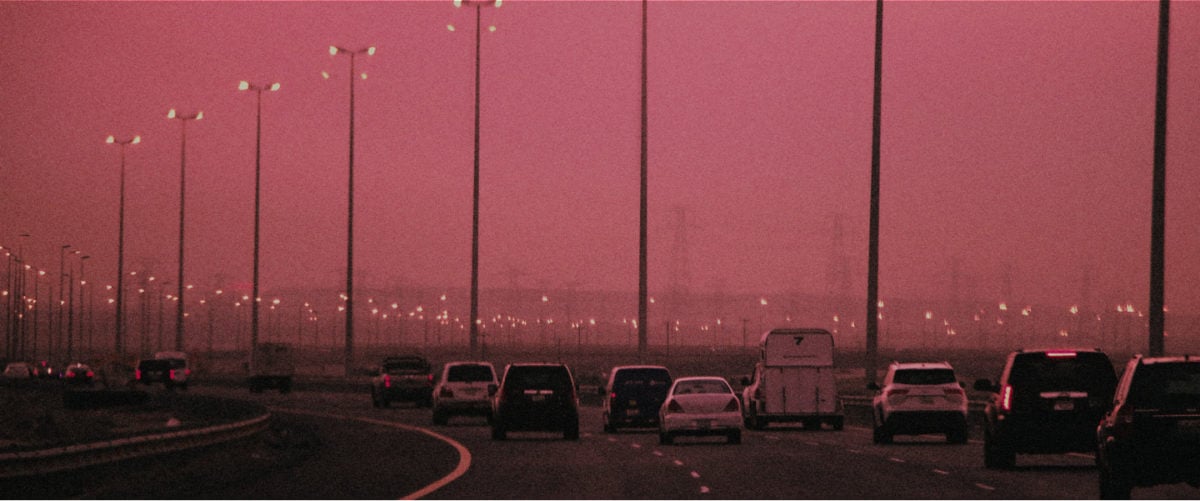Debunking the Fantasy of Using Pollution to Fight Climate Change
Published Nov 15, 2023

Buzz is growing around proposals to use pollution to slow climate change. Here are 4 reasons this is a terrible idea.
As the climate emergency becomes more urgent, so does our need to move off fossil fuels. But we’re seeing a growing number of truly outlandish proposals to “tackle” the problem — without addressing the fossil fuels at the root. For instance, some are seriously suggesting we blast away part of the moon to create a blanket of dust that would black out the sun.
These suggestions would be laughable if they weren’t starting to gain traction. Take “stratospheric aerosol injection,” or SAI. SAI would involve shooting pollution into our skies to block the sun’s rays and cool the planet. Growing buzz around this reckless climate scam will only distract from the hard political fight to end fossil fuels.
SAI is dangerous, unpredictable, and threatens to sidetrack us from real climate solutions. What’s more, it could create unmanageable problems that would just add to or worsen existing climate chaos. Here, we break down four reasons why we can’t let our leaders take it seriously.
1. Aerosols’ Effects on the Planet Are Complex and Unpredictable
Life on our planet runs on incredibly complex systems. The water cycle; the movement of wind and air across the globe; the ecosystems and creatures whose lives and deaths can create domino effects across continents. Blanketing our atmosphere with aerosols would affect all of these processes in unpredictable and risky ways.
One key problem: we simply don’t have enough information to foresee the effects. Almost all models of how SAI would work rely on a single event — a 1991 volcanic eruption in the Philippines, which released enough sulfur dioxide into the atmosphere to cool global temperatures.
What’s more, unlike a volcanic eruption, SAI wouldn’t be a one-and-done thing. We’d need to continue pumping aerosols into the sky to keep temperatures down. If anything were to happen to that blanket of aerosols or the technology that creates it, we risk catastrophically quick global warming — especially if SAI is used as an excuse to continue emitting climate-warming pollution.
Dig deeper into stratospheric aerosol injection in our fact sheet, “Is the Solution to Climate Change More Pollution?”
2. Aerosols Risk Dire Regional Problems
While stratospheric aerosol injection would lower average global temperatures, it would have wildly varying effects in different regions. Despite the planet’s overall cooling, certain regions could continue experiencing rising temperatures.
Additionally, SAI wouldn’t immediately reverse or stop the effects of climate change. In one model, SAI could lower global temperatures, yet 55% of the Earth’s population would still see a decade of more warming. This could then spiral into negative impacts — for instance, bringing more drought and disease.
Also, SAI wouldn’t just affect temperature — it would also impact rainfall, which in turn would threaten ecosystems and agriculture across the world. For instance, several studies highlight how SAI would dry up the rainy monsoon seasons in South Asia. This would be potentially disastrous for the region’s water supply and agriculture.
3. Aerosols Are Toxic to Our Health
The aerosol most commonly proposed and studied for SAI is sulfur dioxide (SO2), a known pollutant linked to health problems, acid rain, and harm to the ozone layer. Flooding our skies with huge volumes of SO2 is just as problematic as it sounds.
Once in the atmosphere, SO2 could become sulfate particles, some of which would drift down as air pollution. Such pollution could cause potentially fatal harm to our hearts and lungs.
The other, more probable fate for these sulfates is falling down on us as acid rain. This would harm soil and ecosystems and could even make water sources undrinkable.
Purposely injecting more pollutants into our air would be irresponsible, and it would add to the unlivable air pollution that many people around the world already suffer from.
4. Aerosols Could Worsen Other Problems With Carbon Emissions, Like Ocean Acidification
Carbon emissions aren’t just warming the planet — they’re unbalancing our oceans’ delicate ecosystems. SAI does nothing to address this planetary threat. And if it gives license to industries to pump out even more carbon emissions, it’ll worsen the problem.
Along with climate change, carbon emissions drive ocean acidification, which is devastating for ocean life. That includes everything from the fish we eat to the tiny microorganisms that much of our planet’s life depends on.
In fact, ocean acidification has been a key element in multiple mass-extinction events throughout Earth’s history. If carbon emissions continue, today’s ocean acidification crisis will become even worse than it was in previous extinction events. And SAI itself may cause even more damage to our oceans.
The response to ocean acidification must start with stopping carbon emissions at their source — fossil fuels.
The Solutions to Climate Change Are Right in Front of Us
In June 2023, the White House released a report that suggested more research on stratospheric aerosol injection, among other strategies to slow climate change by blocking the sun. Leaders in Europe are also discussing how to study the issue.
But we can’t let our leaders get distracted by yet another climate scam. They’re already pouring billions of dollars into schemes like carbon capture and storage and hydrogen.
Boosting renewable energy alone won’t get the job done, either. Research has shown that without ending fossil fuels, renewables will only supplement them, not replace them.
It’s time for our leaders to stop wasting time giving fossil fuels even more power than they have already. We know how to restore and protect our public health, environment, and climate. And that starts with bold political action to end fossil fuel production and use.
Stay updated with the latest news, analysis, and research like this from Food & Water Watch!
Enjoyed this article?
Sign up for updates.
TO TOP


